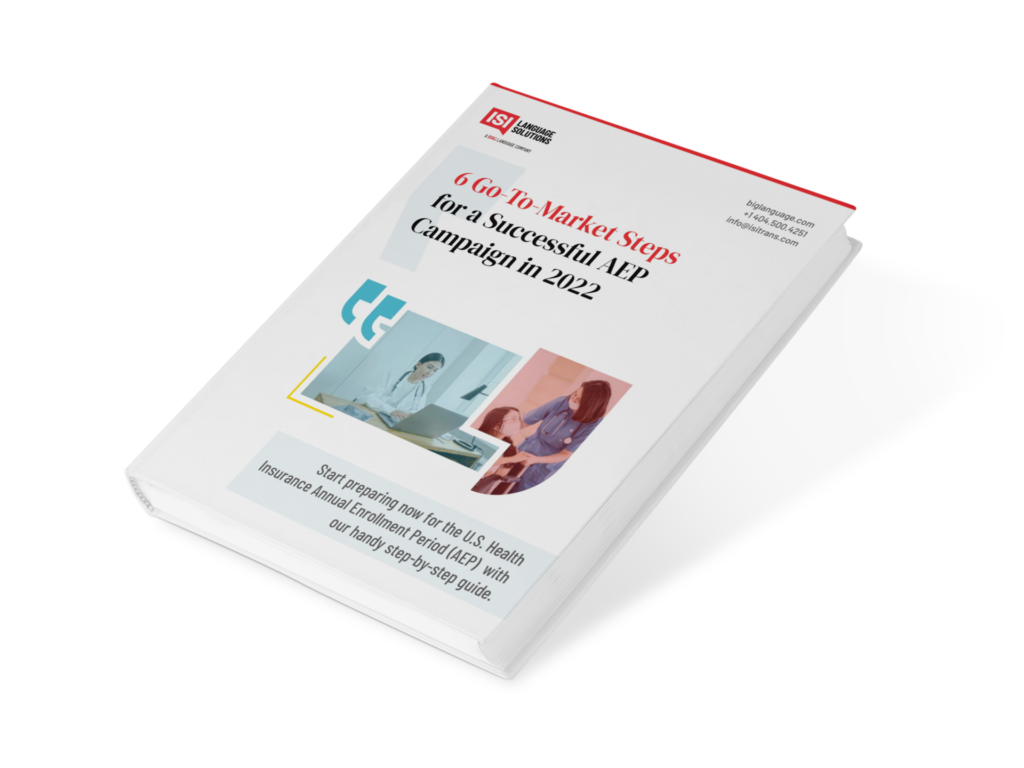Diversifying your communications formats helps you reach more leads and customers. It also enables you to accommodate employees of all types of abilities.
Alternate-format communications like braille, large print, audio, American Sign Language, and closed captioning enable you to provide equal access to diverse populations. When you expand your communications to alternate formats like these, it is important to keep ADA compliance in mind.
ADA stands for the Americans with Disabilities Act. In September 2010, the U.S. Department of Justice (DOJ) published the ADA Standards for Accessible Design. These standards state that people with disabilities must be able to access all information technology and electronic technology from places of public accommodation. That includes the internet and covers organizations including:
- Entities covered by Title II (state and local governments)
- Entities covered by Title III (private businesses and nonprofit organizations that serve the public)
When an organization fails to meet ADA Compliance standards, someone may file a complaint with the DOJ. The DOJ may then investigate the complaint.
Meanwhile, someone who has an issue with ADA noncompliance may choose to pursue litigation against a business or organization. An ADA complaint or lawsuit could result in negative sentiment for an organization, from employees, customers, and the public.
To meet your clients’ needs, and provide equal access to your content, it is helpful to be aware of ADA compliance requirements before you commence the production of your materials. That way, you can make the necessary adjustments that ensure you are in compliance while providing everyone with content in a format that they can easily digest. This guide explains how to navigate ADA compliance and achieve a smooth transition.

Checking Your Current Communications and ADA Compliance Requirements
The ADA outlines how to achieve effective communication for people of all abilities. The ADA states:
- Any person with a hearing, speech, or vision disability must be able to communicate with, convey information to, and receive information from the covered entity.
- Entities covered by the ADA must provide auxiliary services and aids when needing to communicate with those who have communication disabilities.
- Covered entities should consider the person’s normal method of communication and the context of the communication to provide optimal solutions.
Auxiliary aids and services include communication methods for people who have communication disabilities. For example:
- For individuals with vision loss, who are blind, or who are deaf-blind, these methods include braille, large print, qualified readers, and audio recordings of printed information.
- For people who have hearing loss, who are deaf, or who are deaf-blind, these methods include American Sign Language interpreters, qualified notetaker, real-time captioning, written materials, and oral interpreters.
- For those with speech disabilities, these methods include qualified speech-to-speech transliterators and supplemental communication forms, like a paper and pencil to write out communication.
Businesses and nonprofit organizations should research the ADA effective communication guidelines to understand where their methods might be lacking for the particular audiences the organization serves. To achieve true equal access for all populations, it is helpful to incorporate all communication methods and auxiliary aids and services for all types of content, in case that type of population needs access in the future.
Updating Your Alternate-Format Communications
Meeting ADA compliance guidelines can be a complex process. The World Wide Web Consortium’s guide on how to meet Web Content Accessibility Guidelines alone has dozens of recommendations, covering everything from time-based media like audio- and video-only content, to web and smartphone operability that spans keyboards and navigation.
To update your alternate-format communications, it can be helpful to work with a language asset specialist who can assist you to identify gaps and assist in fixing any ADA compliance issues. There are also a number of ADA-focused technology solutions that can help to resolve technical compliance issues across your content platforms.
You will want to ensure the solutions you implement work well for your target audience. Test your alternate-format communications with real audiences who have disabilities, so you can confirm that what you offer is accessible to all.
Tips for Creating a Plan to Address Compliance
You may be dealing with a variety of materials that need to be converted to ADA-compliant materials for equal access. These may include:
- A website
- Web applications
- Documents
- Training materials
- Mobile applications
To ensure you cover all your bases and do not exclude any audience from accessing any of your materials, use these steps to address ADA compliance.
1. Audit What You Have
Using the ADA guidelines, identify which web materials and applications you currently have that are not ADA-compliant. If you are doing this in-house, you may enlist your IT department to conduct the audit. Or, hire an external language access specialist who can help you create a roadmap of the work you need to accomplish.
2. Research Language Access Specialists
If you determine you will need external help to implement alternate-format communications, research and come up with a list of vendors to contact. Many language access specialists will offer a free consultation, so they can understand your organization’s needs and determine if they are an optimal fit.
You may want to involve other members of your team in the vendor selection, like customer service and IT, since they know your current capabilities and what the populations you serve a need.
3. Create Alternate-Format Communications
Again, use the ADA guidelines to create alternate-format communications for existing materials. Prioritize materials that you are legally obligated to provide ADA formats for. Test the new alternate-format communications you have created with appropriate audiences to ensure they work for all populations.
4. Use ADA Compliance to Guide Future Strategy
Save time in the future by creating ADA-friendly versions of all future materials and content you create. If you worked with an external language access specialist to convert your existing materials, you may see if you can retain their services going forward to consult with you on new materials and content.

ADA Compliance Helps You Achieve Equal Access
When you ensure the content you produce is ADA-compliant, you ultimately increase your reach with leads and customers. You protect yourself as an employer by confirming content like training materials are accessible for employees of all abilities.
Many language access specialists can also help you expand your audience further by offering digital materials, like a website or mobile app, in a variety of languages. Global businesses and organizations can reach more people with BIG Language Solutions.







